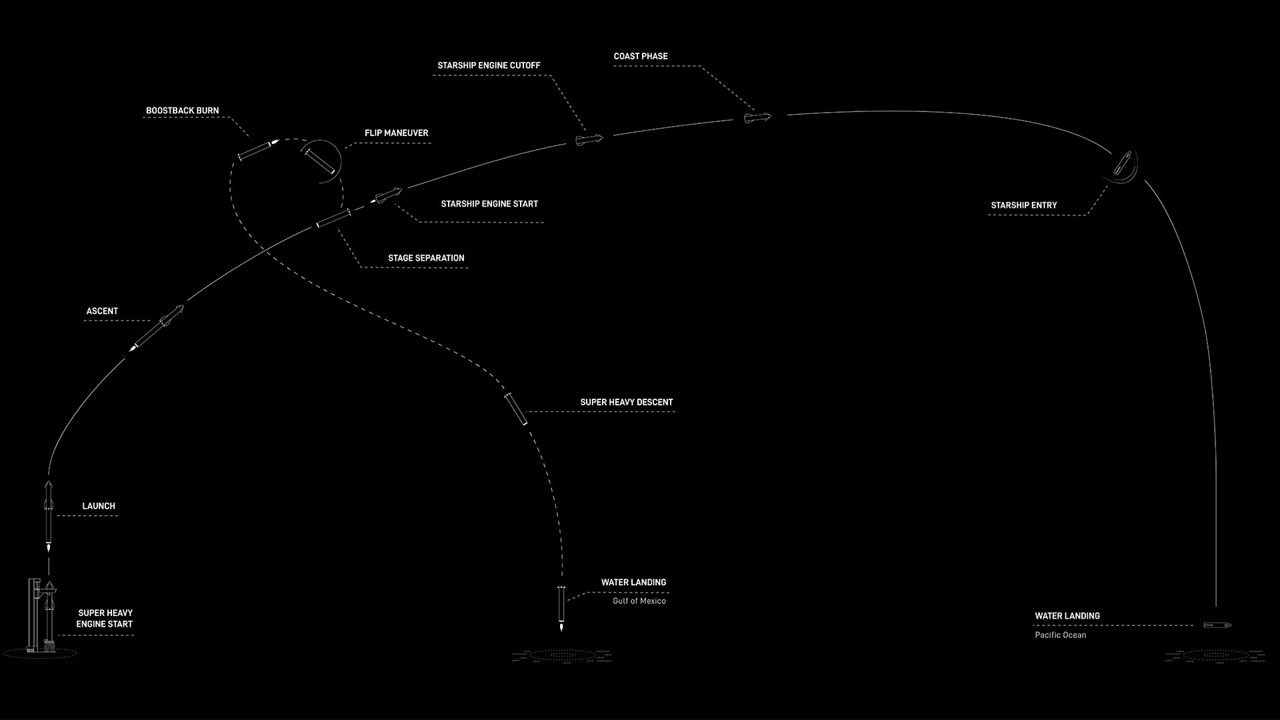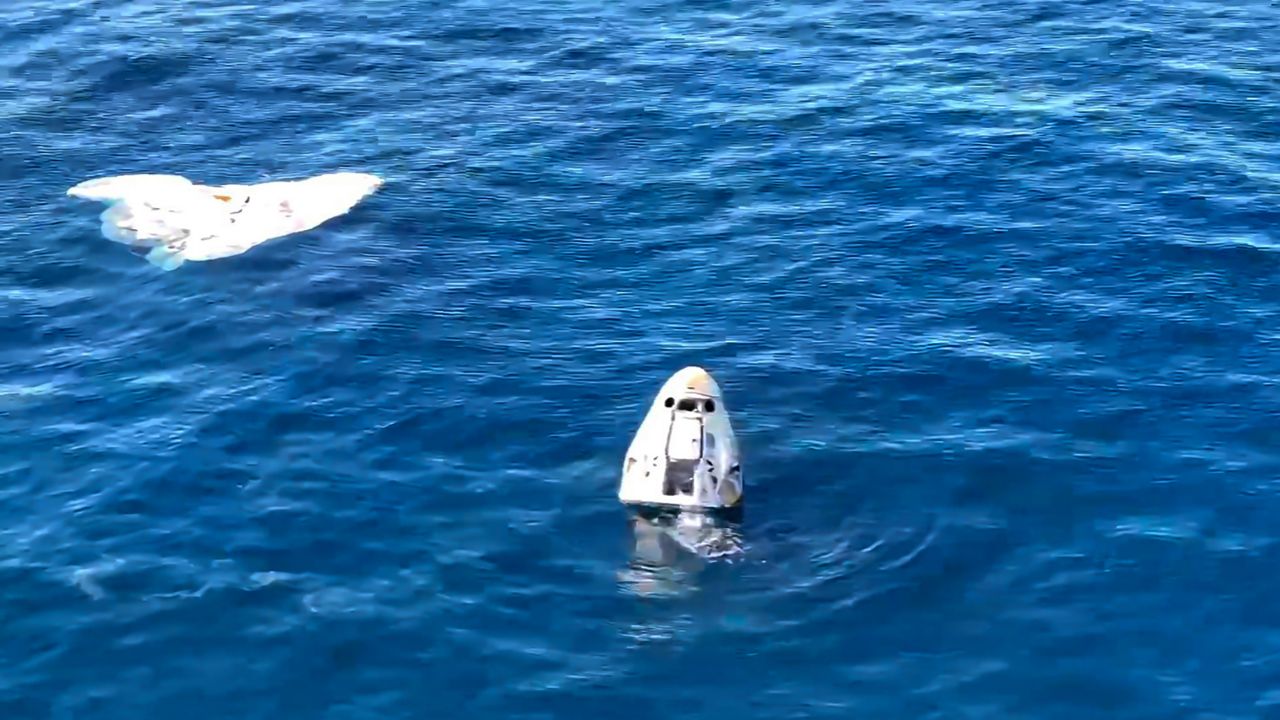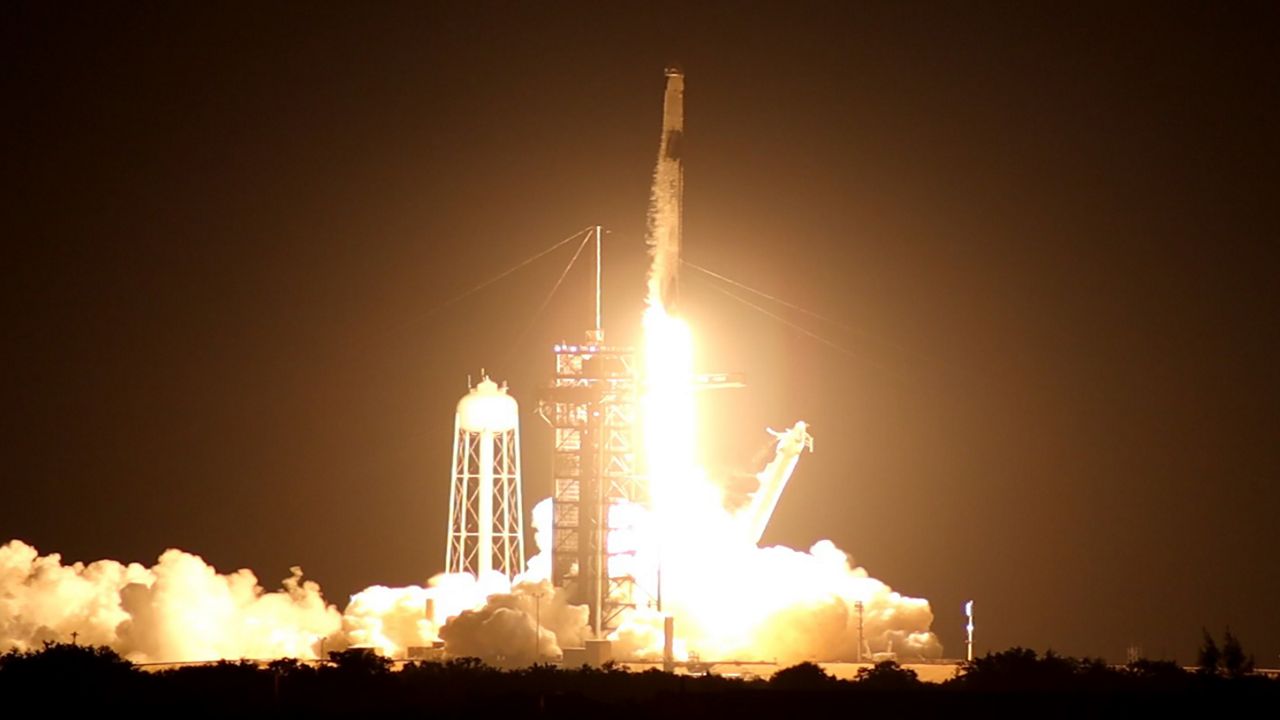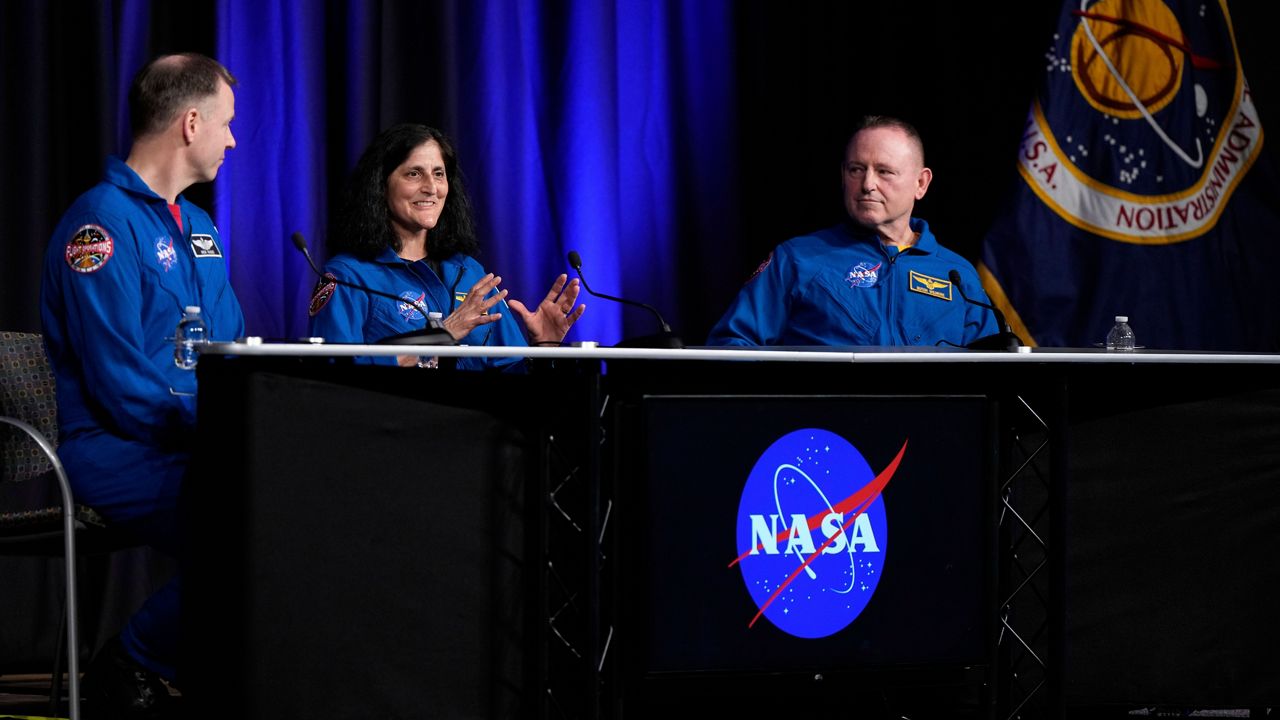BOCA CHICA BEACH, Texas — SpaceX was hoping to strike gold twice with another chopsticks catch of the Starship's rocket booster during its sixth-test flight, but that did not happen on Tuesday evening as the company's team was forced to do a controlled splashdown in the Gulf of Mexico.
What You Need To Know
- The launch took place at the Starbase in Boca Chica, Texas; this was the sixth test for the rocket
- The spacecraft is known as Starship while the rocket booster is called the Super Heavy. When they are stacked together, they are known as Starship
- In the last test, the first-stage booster was caught by the launch tower’s metal chop sticks
- Learn more about the Starship spacecraft and the Super Heavy rocket ▶
- Get more space coverage here ▶
- 🔻Watch SpaceX's history and its future in Florida🔻
Countdown to launch
Liftoff of Starship! pic.twitter.com/rSLQ2DDy63
— SpaceX (@SpaceX) November 19, 2024
SpaceX’s well-known 397-foot Starship (121 meters tall) launched from the company’s Starbase facility in Boca Chica, Texas at 5 p.m. ET, according to SpaceX. It was going to take off on Monday at the same time.
Super Heavy is the rocket booster part of the vehicle, while the spacecraft is called Starship, which will send people back to the moon during the Artemis III mission if all things go according to plan. Together, they are known as Starship.
As Starship took off (without a crew), all 33 Raptor engines were lit up as designed before the hot-stage separation took place, where the spacecraft separated from the rocket booster.
The rocket booster was supposed to return to the landing tower like in test five, with the hope that it would be caught in the metal arms, or chopsticks as they have become known.
However, that did not go according to plan and the booster had to do a splashdown in the Gulf of Mexico, where after it touch the water it blew up. It is not known if SpaceX intentionally blew it up or if the explosion happened when the hot booster touched the cold water.
Super Heavy initiates its landing burn and softly splashes down in the Gulf of Mexico pic.twitter.com/BZ3Az4GssC
— SpaceX (@SpaceX) November 19, 2024
Hours after the test, SpaceX explained that after the hot-stage seperation, automated systems caught an issue that aborted the chopsticks from catching the rocket booster.
"During this phase, automated health checks of critical hardware on the launch and catch tower triggered an abort of the catch attempt. The booster then executed a pre-planned divert maneuver, performing a landing burn and soft splashdown in the Gulf of Mexico," the company explained.
The fifth test was the first time the rocket booster was caught by the chopsticks.
The final phase of Super Heavy's landing burn used the three center Raptor engines to precisely steer into catch position pic.twitter.com/BxQbOmT4yk
— SpaceX (@SpaceX) October 14, 2024
Outside of the rocket booster not returning to the launch tower, the sixth test appeared to go well. The Starship spacecraft itself went into a suborbital trajectory where a series of tests were conducted on the craft.
"Starship has successfully ignited one of its Raptor engines while in space for the first time," SpaceX posted on X, formerly known as Twitter.
Right before Starship re-entered Earth's atmopshere, it was going about 16,466 mph (26,500 kph). For the first time, the upper-stage Starship did a daylight splashdown in the Indian Ocean as the Starship team was heard cheering during SpaceX's livefeed of the mission.
Starship preparing to splash down in the Indian Ocean pic.twitter.com/EN9jibr07l
— SpaceX (@SpaceX) November 19, 2024
SpaceX officials stated during the livefeed that they were not 100% sure if the spacecraft would be recovered after its splashdown in the Indian Ocean.
It will be awhile until SpaceX will release the data of this more than an hour flight and what changes will be made for Starhip's seventh test. The date for that is unknown but it is expected to happen in 2025.
What was expected for the sixth-test flight
SpaceX explained that its sixth-test flight would build on the previous launches and push the envelope.
“The next Starship flight test aims to expand the envelope on ship and booster capabilities and get closer to bringing reuse of the entire system online. Objectives include the booster once again returning to the launch site for catch, reigniting a ship Raptor engine while in space, and testing a suite of heatshield experiments and maneuvering changes for ship reentry and descent over the Indian Ocean,” SpaceX stated.
SpaceX asserted that while the very first catch of the ship’s rocket booster was a success, it provided important data that has been used to improve the craft’s software and hardware.
“Hardware upgrades for this flight add additional redundancy to booster propulsion systems, increase structural strength at key areas, and shorten the timeline to offload propellants from the booster following a successful catch. Mission designers also updated software controls and commit criteria for the booster’s launch and return,” according to the company.
SpaceX also stated that this Starship has a new heat shield for the sixth flight with new thermal material added for additional projection of the ship.
Learning about Starship
Starship is designed to send humans back to the moon and, eventually, take them to the planet Mars. Once SpaceX is given government clearance to launch Starship, it will be used for a Polaris Dawn civilian mission and NASA’s Artemis III human-moon mission.
Both the Super Heavy rocket, with its 33 Raptor engines fueled by thousands of tons of sub-cooled liquid oxygen and liquid methane, and the Starship are constructed to be reusable.
Starship will eventually carry 100 people and cargo to low-Earth orbit, the moon and the red planet, according to the ship’s user guide.
“The crew configuration of Starship includes private cabins, large common areas, centralized storage, solar storm shelters and a viewing gallery,” the six-page guide said.
Starship’s flight history
With each flight test, SpaceX has seen a measured success for Starship. So far, it has lived up to the old adage: If at first you don't succeed, try, try again.
The first launch attempt of Starship happened in April 2023, and saw a series of failures that caused the rocket to explode.
The FAA issued a string of conditions before the California-based company could try again, which included 63 corrective actions.
During its second test in November 2023, SpaceX was forced to destroy Starship.
The new stage separation, called hot stage separation, worked as designed, but it caused the Super Heavy rocket’s destruction.
“Following stage separation, Super Heavy initiated its boostback burn, which sends commands to 13 of the vehicle’s 33 Raptor engines to propel the rocket toward its intended landing location. During this burn, several engines began shutting down before one engine failed energetically, quickly cascading to a rapid unscheduled disassembly of the booster,” SpaceX described.
SpaceX experts said they believed the likely cause of the booster blowing up was a blockage in the filter where liquid oxygen fuel goes to the engines.
Minutes after the hot-stage separation, SpaceX could not retrieve a signal to the Starship spacecraft and was forced to terminate it.
“A leak in the aft section of the spacecraft that developed when the liquid oxygen vent was initiated resulted in a combustion event and subsequent fires that led to a loss of communication between the spacecraft’s flight computers. This resulted in a commanded shut down of all six engines prior to completion of the ascent burn, followed by the Autonomous Flight Safety System detecting a mission rule violation and activating the flight termination system, leading to vehicle breakup,” the company explained.
SpaceX fixed 17 corrective actions that took place during the second flight attempt.
The third test took place in March 2024, and while it was not a complete success, a number of accomplishments were made, stated SpaceX:
- All Raptor engines lighting up
- A completed a propellant transfer demonstration
- The second time the hot stage separation worked
- The craft's heat shield being intact
- The payload doors, known as Pez door, worked
- The first time Starship was in space
- The longest Starship test so far

As mentioned, it was not a fully successful operation. While 13 of the 33 Raptor engines of the Super Heavy lit up as designed following a stage separation, six of the lit engines shut down, which triggered an early boost-back shutdown.
Since 13 engines were needed for the landing of the Super Heavy booster and only six shut down, that left seven, but only two could reach mainstage ignition and the booster did not survive the landing.
SpaceX believed the cause of the issue was the persistent filter blockage of the liquid oxygen going into the engines, which happened in the first test flight.
For the Starship spacecraft itself, it was mostly functioning until 49 minutes into its mission.
“Several minutes after Starship began its coast phase, the vehicle began losing the ability to control its attitude. Starship continued flying its nominal trajectory but given the loss of attitude control, the vehicle automatically triggered a pre-planned command to skip its planned on-orbit relight of a single Raptor engine,” SpaceX explained.
Starship was ultimately in space for the first time and sending data to the SpaceX team, but the lack of attitude control caused its destruction.
“The most likely root cause of the unplanned roll was determined to be clogging of the valves responsible for roll control. SpaceX has since added additional roll control thrusters on upcoming Starships to improve attitude control redundancy and upgraded hardware for improved resilience to blockage,” stated SpaceX.
During the fourth test in June 2024, additional thrusters were added to Starship to prevent it from rolling, which lead to its predecessor’s destruction in test three.
Things were going to plan during test four until re-entry. As the ship was coming in at more than 11,800 mph (19,000 kmh), heating tiles were seen coming off it as a landing flap started to come apart.
However, the flap stayed on, and it made it through its re-entry in the Indian Ocean for the first time.
During its fifth test in October 2024, for the first time, the rocket booster returned to the launch pad and was caught by the chopsticks of the 480-foot (146 meter) launch tower.











